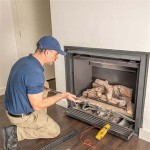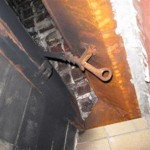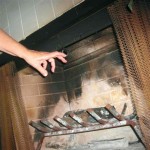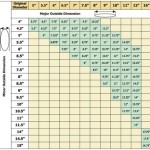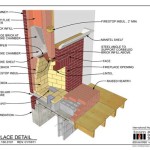Cleaning a Brick Fireplace for Painting: A Comprehensive Guide
Painting a brick fireplace can dramatically transform a living space, offering a fresh, updated look. However, a successful paint job relies heavily on proper preparation, and cleaning the brick is undoubtedly the most crucial step. Neglecting thorough cleaning can lead to paint adhesion issues, resulting in peeling, bubbling, and an overall unsatisfactory finish. This article provides a detailed guide to effectively clean a brick fireplace in preparation for painting, ensuring a lasting and visually appealing result.
Before embarking on the cleaning process, gather the necessary materials. This includes a stiff-bristled brush (preferably with nylon bristles), a vacuum cleaner with a hose attachment, a drop cloth or plastic sheeting, trisodium phosphate (TSP) or a TSP substitute, a spray bottle, a scrub brush, rubber gloves, safety goggles, and a bucket. Depending on the condition of the brick and the type of soiling, additional cleaning agents such as muriatic acid (with extreme caution and proper ventilation), a specialized brick cleaner, or a degreaser might be required.
The process begins with a thorough inspection of the fireplace. Identify any existing damage, such as cracks or crumbling mortar. These issues should be addressed before proceeding with cleaning, as moisture intrusion can exacerbate the problem and compromise the paint job. Note the type and severity of soiling. Is it primarily soot and ash, or are there greasy residues, mold, or efflorescence (a white, powdery deposit of mineral salts)? Understanding the nature of the grime will inform the choice of cleaning agents and techniques.
Key Point 1: Removing Loose Debris and Soot
The initial step involves removing all loose debris and soot from the brick surface. This is most effectively achieved using a vacuum cleaner with a hose attachment and a brush nozzle. Systematically vacuum the entire fireplace, paying particular attention to crevices, joints, and any areas where soot has accumulated. The brush nozzle helps to dislodge stubborn particles, while the vacuum sucks them away, preventing them from spreading throughout the room. For larger debris, such as loose mortar chunks or brick fragments, a dustpan and brush can also be used.
Following the vacuuming, use a stiff-bristled brush to further dislodge any remaining soot or debris. Scrub the brick surface thoroughly, applying moderate pressure. Work in small sections, brushing in a circular motion to effectively loosen the grime. Remember to wear safety goggles and a dust mask during this step to protect your eyes and respiratory system from airborne particles. Regularly clean the brush to prevent it from becoming clogged with soot.
After the initial brushing, vacuum the fireplace again to remove any loosened debris. This ensures that the surface is as clean as possible before proceeding with the next stage of the cleaning process. Dispose of the collected debris properly to prevent it from contaminating other areas of the home. A garbage bag lined with a plastic bag is a suitable option for containing the soot and ash.
Key Point 2: Deep Cleaning with TSP or TSP Substitute
Once the loose debris has been removed, the next step involves deep cleaning the brick using a solution of trisodium phosphate (TSP) or a TSP substitute. TSP is a powerful cleaning agent that effectively removes grease, grime, and soot. However, TSP can be harmful to the environment and can also irritate the skin and eyes. Therefore, a TSP substitute is often recommended as a safer alternative. Both TSP and its substitutes are readily available at most hardware stores.
Prepare the cleaning solution according to the manufacturer's instructions. Typically, this involves dissolving a specified amount of TSP or TSP substitute in warm water. Wear rubber gloves and safety goggles when handling these chemicals to protect your skin and eyes. Pour the solution into a spray bottle for easy application. Before applying the cleaning solution to the entire fireplace, test it on a small, inconspicuous area to ensure that it does not damage or discolor the brick. Allow the solution to sit on the test area for a few minutes, then rinse it off with clean water and observe the results.
If the test area shows no adverse effects, proceed to spray the entire fireplace with the cleaning solution. Saturate the brick surface thoroughly, allowing the solution to penetrate the pores of the brick. Let the solution sit for approximately 15-20 minutes to allow it to loosen the grime. After the soaking period, use a scrub brush to thoroughly scrub the brick surface. Apply moderate pressure, working in small sections. Pay particular attention to areas with heavy soiling or stains.
After scrubbing, rinse the brick thoroughly with clean water. Use a sponge or a clean cloth to wipe away any remaining cleaning solution. Repeat the rinsing process until all traces of the TSP or TSP substitute have been removed. Failure to thoroughly rinse the brick can leave a residue that can interfere with paint adhesion. Allow the fireplace to dry completely before proceeding to the next step. This may take several hours or even overnight, depending on the humidity and ventilation.
Key Point 3: Addressing Stubborn Stains and Residues
In some cases, stubborn stains or residues may persist even after cleaning with TSP or a TSP substitute. These may include grease stains, mold growth, or efflorescence. Different cleaning agents and techniques may be required to address these specific issues.
For grease stains, a degreasing cleaner can be effective. Apply the degreaser to the affected area, following the manufacturer's instructions. Allow it to sit for the recommended time, then scrub the area with a scrub brush and rinse thoroughly with clean water. Repeat the process if necessary. For mold growth, a solution of bleach and water can be used. Mix one part bleach with ten parts water and apply the solution to the affected area. Allow it to sit for a few minutes, then scrub the area with a scrub brush and rinse thoroughly with clean water. Exercise caution when using bleach, as it can discolor some types of brick and can also be harmful to your health. Always wear rubber gloves and safety goggles when handling bleach, and ensure adequate ventilation.
Efflorescence, the white powdery deposit of mineral salts, can be removed using a specialized brick cleaner designed for this purpose. These cleaners typically contain mild acids that dissolve the mineral salts. Apply the cleaner according to the manufacturer's instructions, allowing it to sit for the recommended time. Then, scrub the area with a scrub brush and rinse thoroughly with clean water. Repeat the process if necessary. In some cases, muriatic acid may be used to remove stubborn efflorescence. However, muriatic acid is a highly corrosive chemical and should only be used as a last resort, and only by experienced individuals wearing appropriate protective gear (including a respirator) and ensuring proper ventilation. Always dilute muriatic acid according to the manufacturer's instructions, and test it on a small, inconspicuous area before applying it to the entire fireplace.
After addressing any stubborn stains or residues, allow the fireplace to dry completely before proceeding with painting. Ensure that the brick is thoroughly dry to prevent moisture from becoming trapped beneath the paint, which can lead to peeling and bubbling. A moisture meter can be used to verify the moisture content of the brick. The recommended moisture content for painting brick is typically below 12%. If the moisture content is too high, allow the fireplace to dry further or use a dehumidifier to expedite the drying process.
Once the cleaning process is complete and the brick is thoroughly dry, inspect the fireplace one last time. Look for any remaining debris, stains, or imperfections. Address any issues before proceeding with priming and painting. With a properly cleaned and prepared brick fireplace, the painting process will be significantly easier, and the final result will be more durable and visually appealing.

How To Clean A Brick Fireplace Before Painting

How To Prep Brick Fireplace For Painting Et Painters

Painting Brick Fireplace White A Renovation Story

How To Paint A Fireplace Firewood Centre

A Complete Guide To Painting Fireplace Brick 2024 Grace In My Space

Mortar Wash Brick Fireplace Makeover Dimples And Tangles

Paint N L Fireplace Cleaner Chimneysaver

How To Paint A Brick Fireplace Beamin Moore

How To Strip Paint From Brick Fireplace My Alternate Life

How To Paint A Brick Fireplace For Less Than 150 Slay At Home Mother
Related Posts

